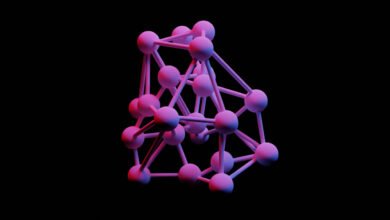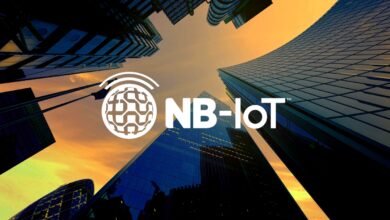IoT-Based Predictive Maintenance for German Manufacturers
This article delves into the intricacies of IoT-based predictive maintenance, its benefits, implementation strategies, and its impact on German manufacturers.

The manufacturing sector in Germany, often referred to as the backbone of Europe’s economy, is undergoing a transformative shift. As Industry 4.0 continues to gain momentum, German manufacturers are increasingly adopting IoT-based predictive maintenance to enhance operational efficiency, reduce downtime, and optimize costs. This article delves into the intricacies of IoT-based predictive maintenance, its benefits, implementation strategies, and its impact on German manufacturers.
Understanding IoT-Based Predictive Maintenance
What is IoT-Based Predictive Maintenance?
IoT-based predictive maintenance leverages the Internet of Things (IoT) to monitor equipment and machinery in real-time. By collecting and analyzing data from sensors embedded in machines, manufacturers can predict when a component is likely to fail and schedule maintenance before the failure occurs. This proactive approach contrasts with traditional reactive maintenance, where repairs are made after a breakdown, and preventive maintenance, which follows a fixed schedule regardless of the actual condition of the equipment.
How Does It Work?
- Data Collection: Sensors attached to machinery collect data on various parameters such as temperature, vibration, pressure, and humidity.
- Data Transmission: The collected data is transmitted to a central system via IoT networks.
- Data Analysis: Advanced analytics and machine learning algorithms analyze the data to identify patterns and anomalies.
- Predictive Alerts: The system generates alerts when it detects signs of potential failure, allowing maintenance teams to take corrective action.
- Maintenance Scheduling: Maintenance is scheduled based on the predictive insights, ensuring minimal disruption to operations.
Benefits of IoT-Based Predictive Maintenance for German Manufacturers
1. Reduced Downtime
Downtime is a significant concern for manufacturers, leading to lost productivity and revenue. IoT-based predictive maintenance minimizes unplanned downtime by identifying potential issues before they escalate into major problems. For German manufacturers, where precision and efficiency are paramount, this can result in substantial cost savings and improved production schedules.
2. Cost Optimization
Traditional maintenance practices often involve routine checks and part replacements, regardless of the actual condition of the equipment. This can lead to unnecessary expenses. Predictive maintenance, on the other hand, ensures that maintenance is performed only when needed, optimizing costs and extending the lifespan of machinery.
3. Enhanced Equipment Lifespan
By addressing issues before they cause significant damage, predictive maintenance helps in prolonging the lifespan of equipment. This is particularly beneficial for German manufacturers who rely on high-quality, precision machinery. Longer equipment lifespan translates to better return on investment (ROI) and reduced capital expenditure.
4. Improved Safety
Equipment failures can pose safety risks to workers. Predictive maintenance enhances workplace safety by preventing accidents caused by sudden machinery breakdowns. For German manufacturers, who prioritize worker safety and adhere to stringent regulations, this is a crucial advantage.
5. Data-Driven Decision Making
IoT-based predictive maintenance provides manufacturers with valuable insights into equipment performance and health. This data-driven approach enables informed decision-making, helping manufacturers optimize production processes, improve product quality, and reduce waste.
Implementation Strategies for German Manufacturers
1. Assessing Current Infrastructure
Before implementing IoT-based predictive maintenance, manufacturers need to assess their current infrastructure. This includes evaluating the condition of existing machinery, identifying critical assets, and determining the feasibility of integrating IoT sensors.
2. Selecting the Right IoT Platform
Choosing the right IoT platform is crucial for successful implementation. The platform should offer robust data analytics capabilities, seamless integration with existing systems, and scalability to accommodate future growth. German manufacturers should also consider platforms that comply with local data privacy regulations, such as the General Data Protection Regulation (GDPR).
3. Installing Sensors and Connectivity Solutions
Sensors are the backbone of IoT-based predictive maintenance. Manufacturers need to install sensors on critical equipment to monitor key parameters. Additionally, reliable connectivity solutions, such as industrial-grade Wi-Fi or cellular networks, are essential for transmitting data to the central system.
4. Integrating with Enterprise Resource Planning (ERP) Systems
Integrating IoT-based predictive maintenance with ERP systems can enhance operational efficiency. This integration allows for seamless communication between maintenance teams and other departments, ensuring that maintenance activities are aligned with production schedules and business objectives.
5. Training and Change Management
Implementing IoT-based predictive maintenance requires a cultural shift within the organization. Employees need to be trained on how to use the new system and interpret predictive insights. Change management strategies should be employed to ensure smooth adoption and minimize resistance.
6. Continuous Monitoring and Optimization
IoT-based predictive maintenance is not a one-time implementation but an ongoing process. Manufacturers should continuously monitor the system’s performance, gather feedback from maintenance teams, and make necessary adjustments to optimize the system.
Case Studies: German Manufacturers Leveraging IoT-Based Predictive Maintenance
1. Siemens
Siemens, a global leader in industrial manufacturing, has successfully implemented IoT-based predictive maintenance across its facilities. By leveraging its own MindSphere IoT platform, Siemens has been able to monitor equipment health in real-time, predict failures, and schedule maintenance proactively. This has resulted in a significant reduction in downtime and maintenance costs.
2. Bosch
Bosch, another German manufacturing giant, has integrated IoT-based predictive maintenance into its production lines. Using sensors and advanced analytics, Bosch can predict when machines are likely to fail and take preventive measures. This has not only improved equipment reliability but also enhanced overall production efficiency.
3. BMW
BMW has adopted IoT-based predictive maintenance to optimize its manufacturing processes. By monitoring the health of robotic arms and other critical equipment, BMW can predict potential failures and schedule maintenance during non-production hours. This has led to increased production uptime and reduced maintenance expenses.
Challenges and Considerations
1. Data Security and Privacy
With the increasing reliance on IoT, data security and privacy have become major concerns. German manufacturers must ensure that their IoT systems are secure and comply with data protection regulations. This includes implementing encryption, access controls, and regular security audits.
2. Initial Investment
The initial investment required for IoT-based predictive maintenance can be substantial. This includes the cost of sensors, IoT platforms, connectivity solutions, and employee training. However, the long-term benefits, such as reduced downtime and optimized costs, often outweigh the initial expenditure.
3. Integration with Legacy Systems
Many German manufacturers still rely on legacy systems that may not be compatible with modern IoT solutions. Integrating IoT-based predictive maintenance with these systems can be challenging and may require additional investment in upgrading or replacing outdated equipment.
4. Skilled Workforce
Implementing and managing IoT-based predictive maintenance requires a skilled workforce with expertise in IoT, data analytics, and machine learning. German manufacturers may need to invest in training programs or hire specialized talent to bridge the skills gap.
Future Trends in IoT-Based Predictive Maintenance
1. Artificial Intelligence and Machine Learning
The integration of artificial intelligence (AI) and machine learning (ML) with IoT-based predictive maintenance is expected to enhance its capabilities further. AI and ML algorithms can analyze vast amounts of data more accurately, leading to more precise predictions and better decision-making.
2. Edge Computing
Edge computing, where data is processed closer to the source rather than in a centralized cloud, is gaining traction in the manufacturing sector. This approach reduces latency and allows for real-time decision-making, making it ideal for predictive maintenance applications.
3. Digital Twins
Digital twins, virtual replicas of physical assets, are becoming increasingly popular in predictive maintenance. By creating a digital twin of a machine, manufacturers can simulate different scenarios and predict how the machine will perform under various conditions. This can help in identifying potential issues before they occur.
4. 5G Connectivity
The rollout of 5G networks is expected to revolutionize IoT-based predictive maintenance. With faster and more reliable connectivity, manufacturers can transmit and analyze data in real-time, enabling more accurate predictions and quicker response times.
Conclusion
IoT-based predictive maintenance is transforming the manufacturing landscape in Germany, offering numerous benefits such as reduced downtime, cost optimization, enhanced equipment lifespan, improved safety, and data-driven decision-making. While there are challenges to overcome, the long-term advantages make it a worthwhile investment for German manufacturers.
As Industry 4.0 continues to evolve, the integration of advanced technologies like AI, machine learning, edge computing, and digital twins will further enhance the capabilities of IoT-based predictive maintenance. German manufacturers who embrace these innovations will be well-positioned to maintain their competitive edge in the global market.
By adopting IoT-based predictive maintenance, German manufacturers can not only improve their operational efficiency but also contribute to the broader goals of sustainability and resource optimization. The future of manufacturing in Germany is undoubtedly smart, connected, and predictive, thanks to the power of IoT.











